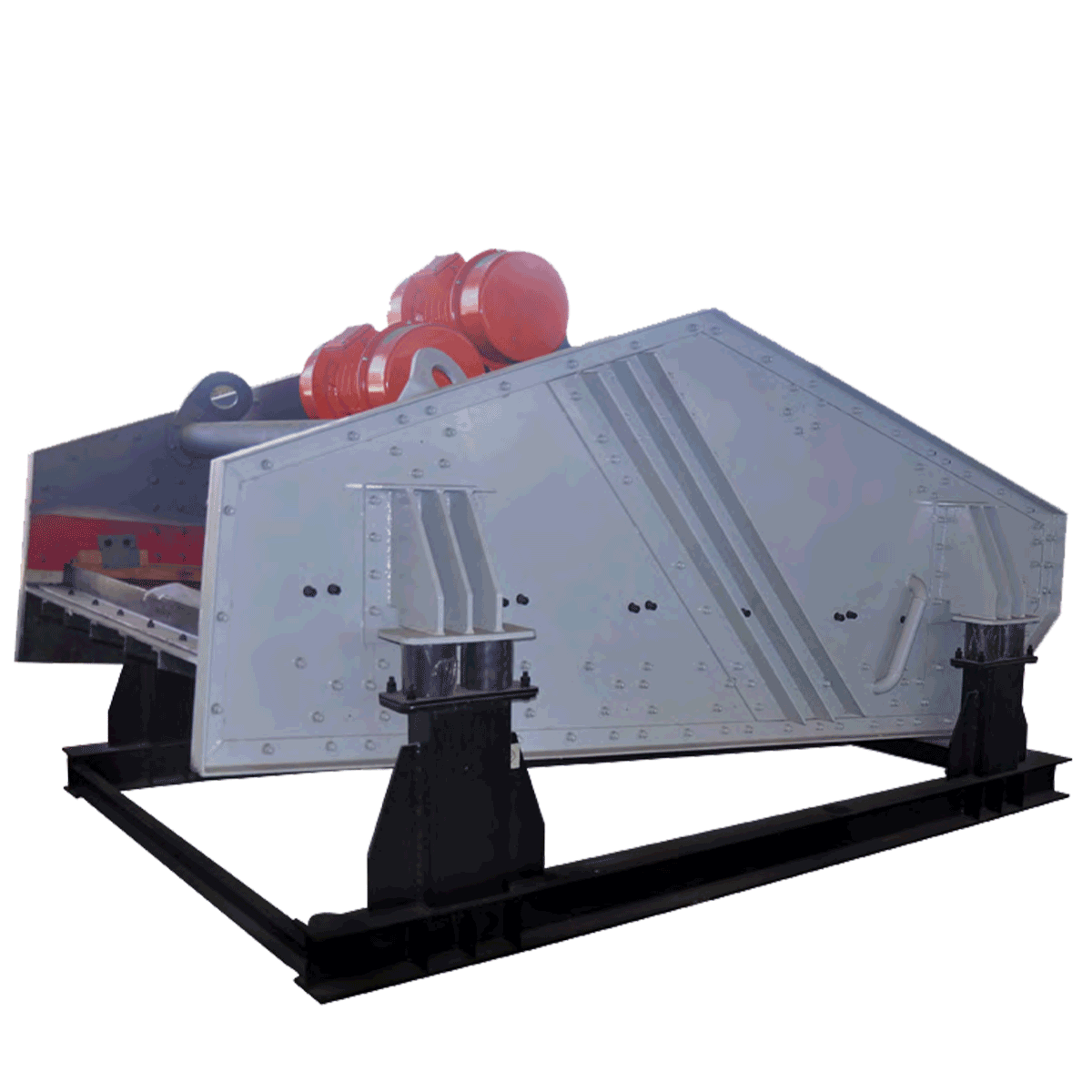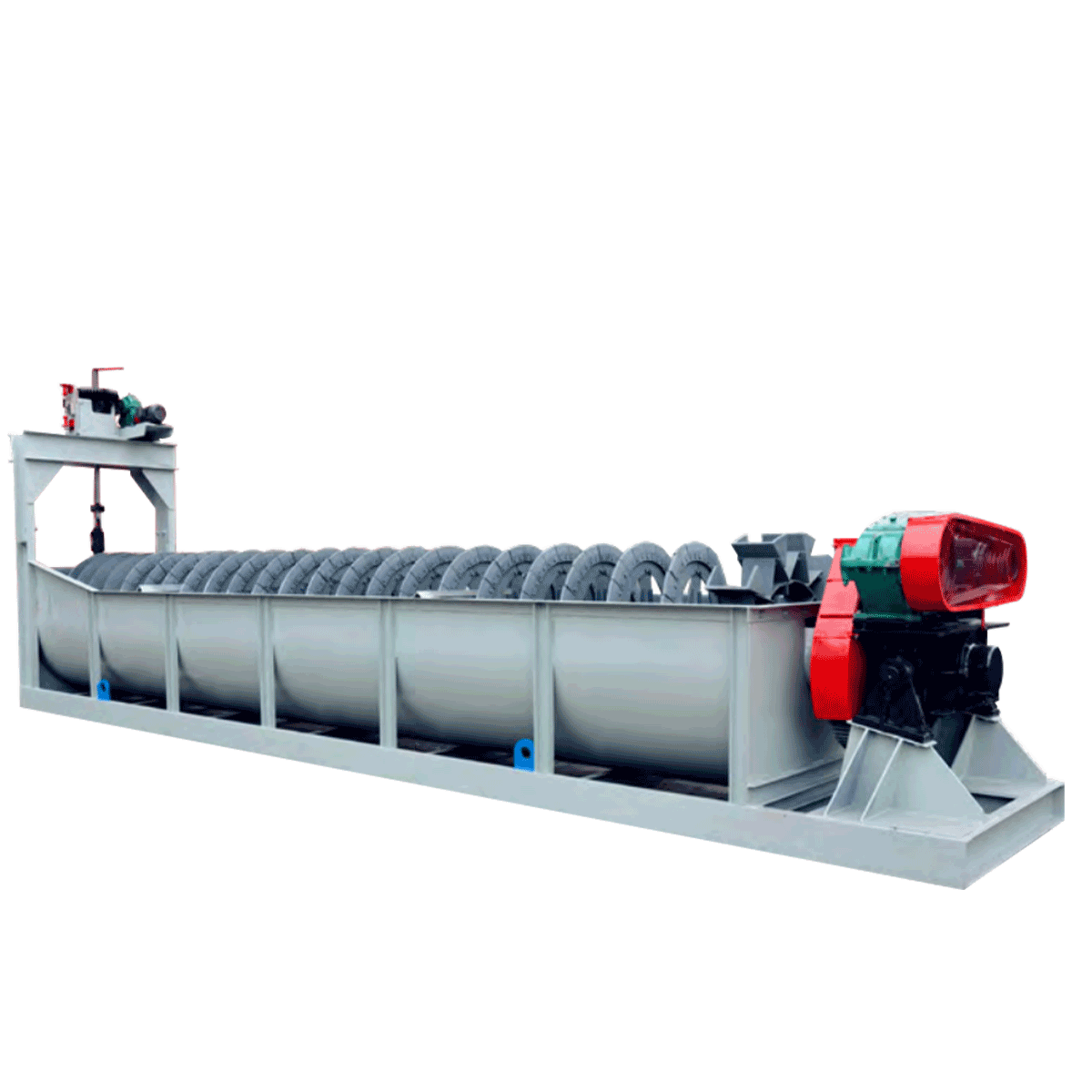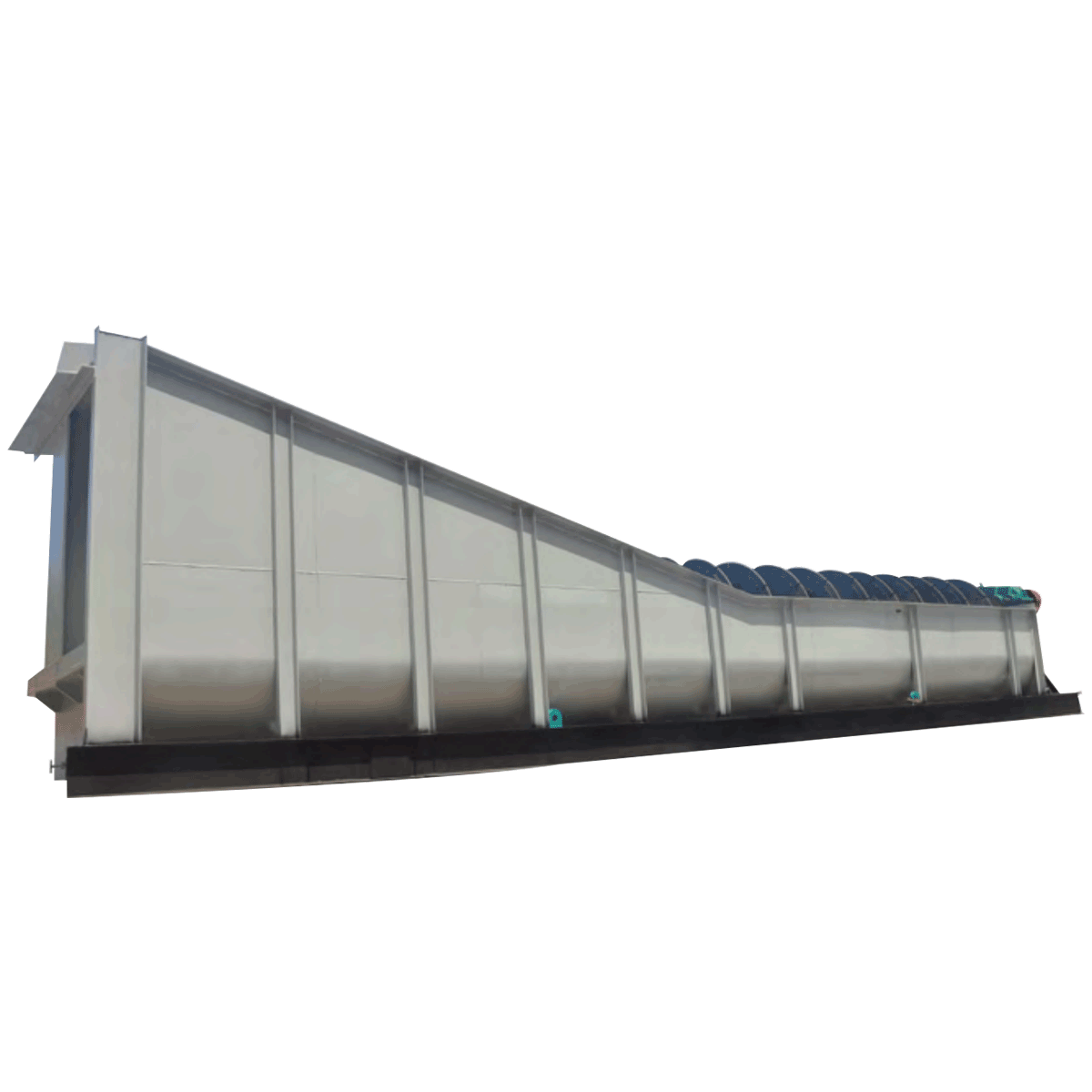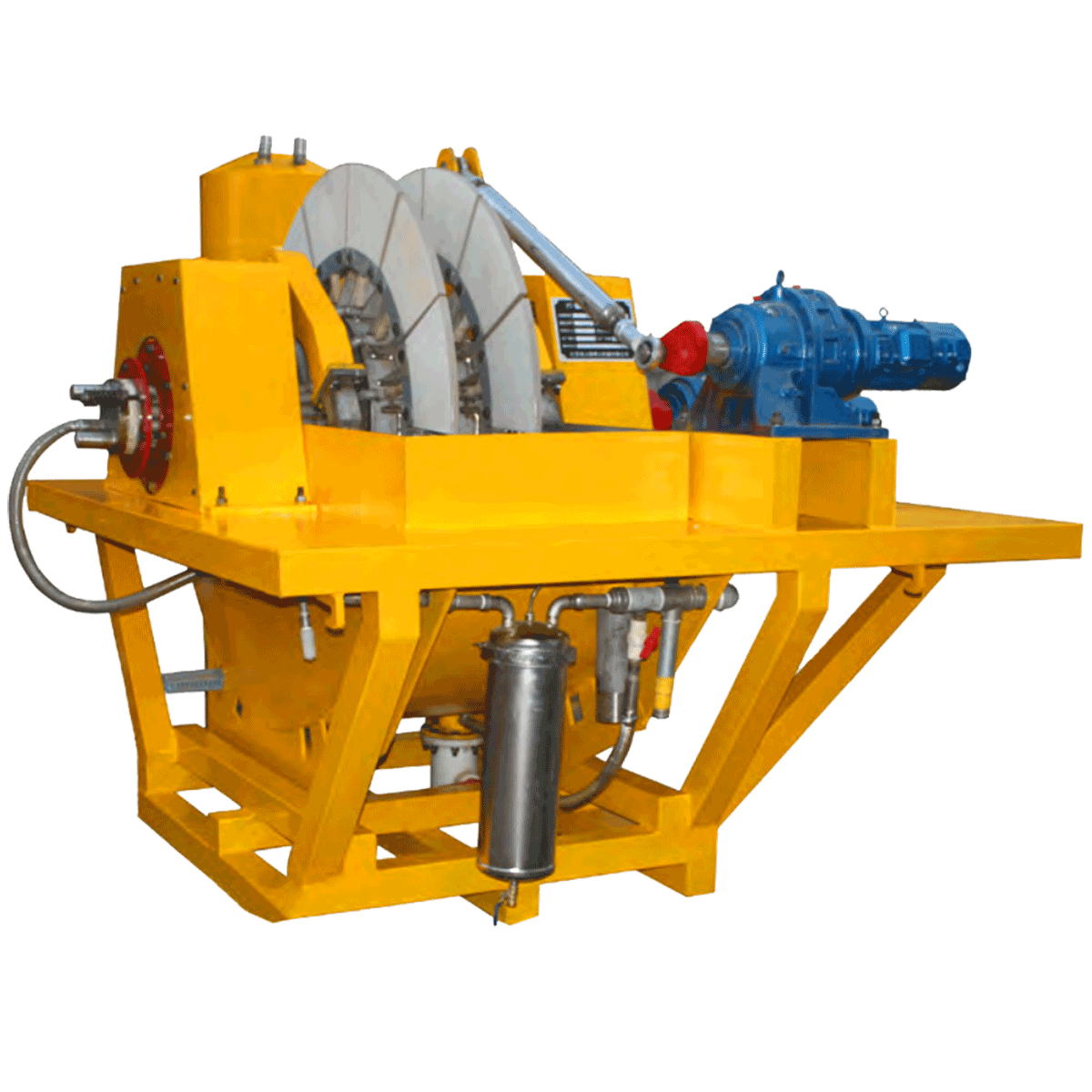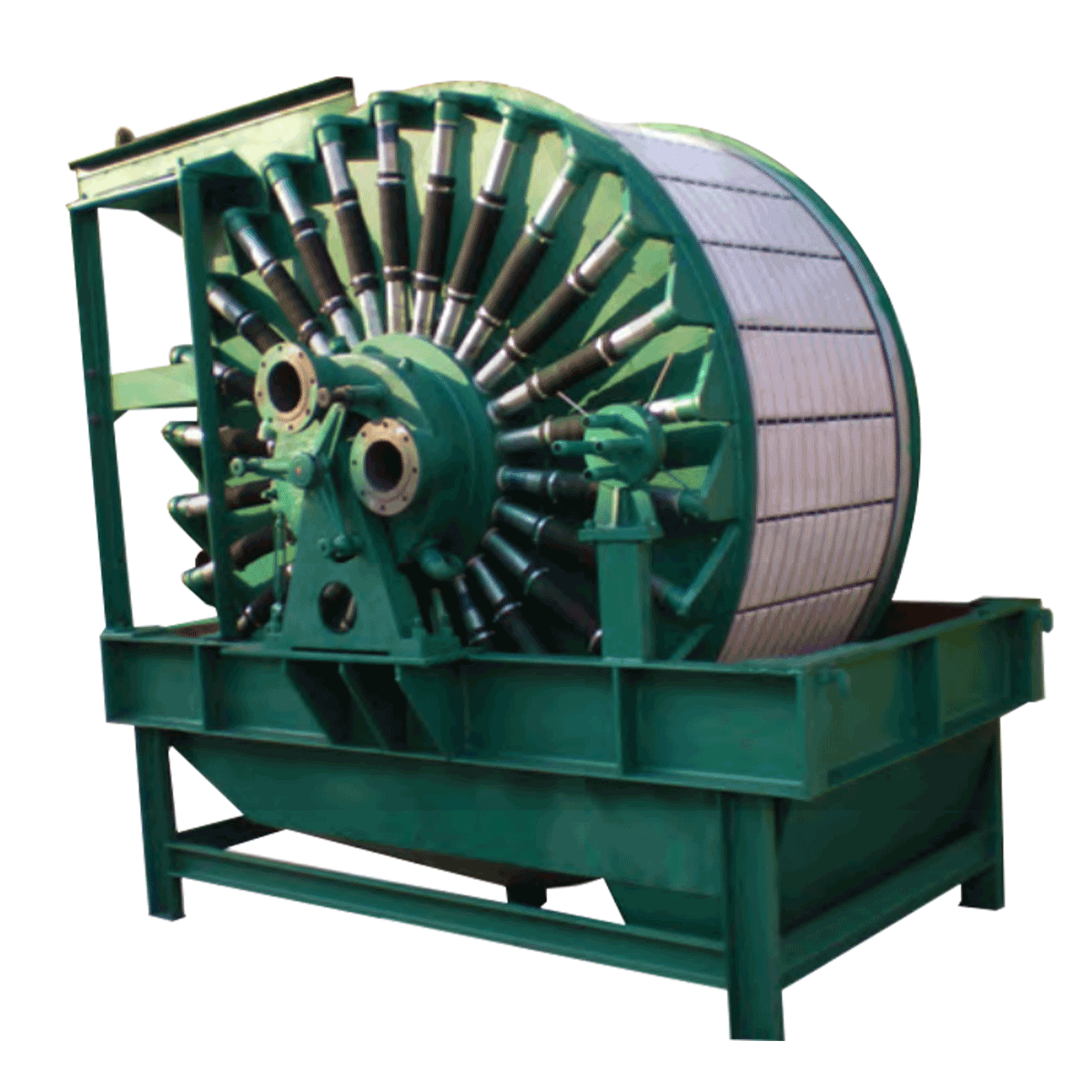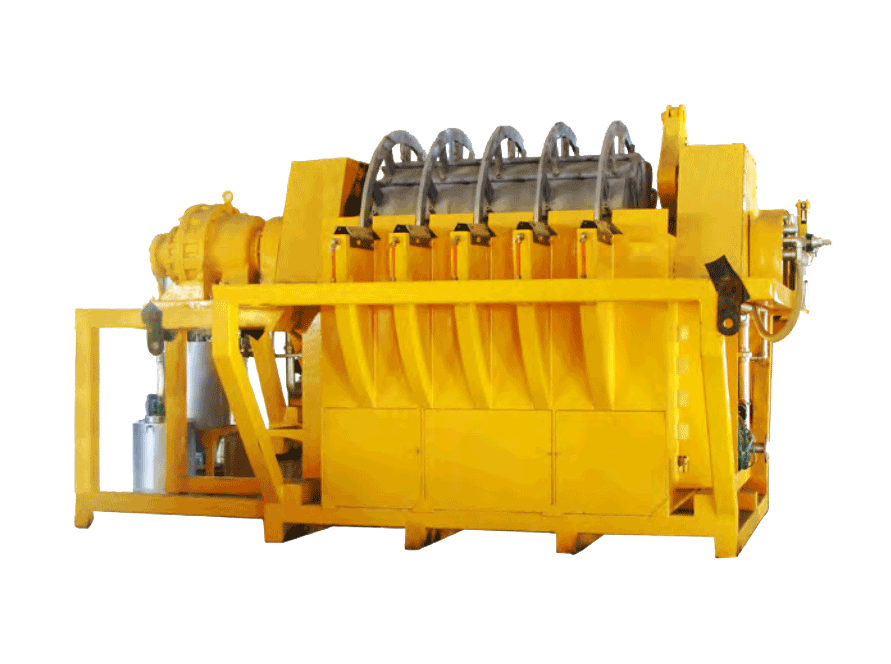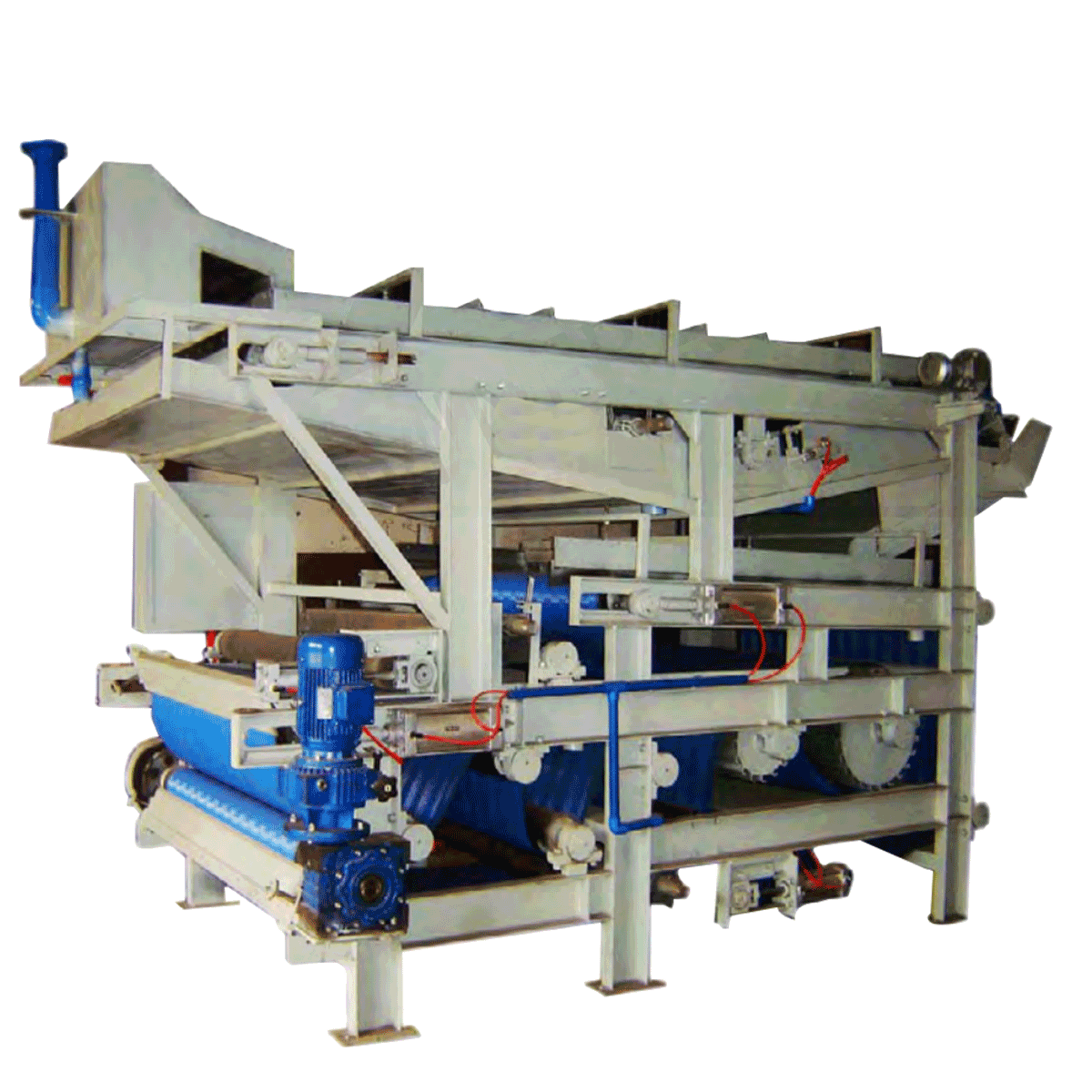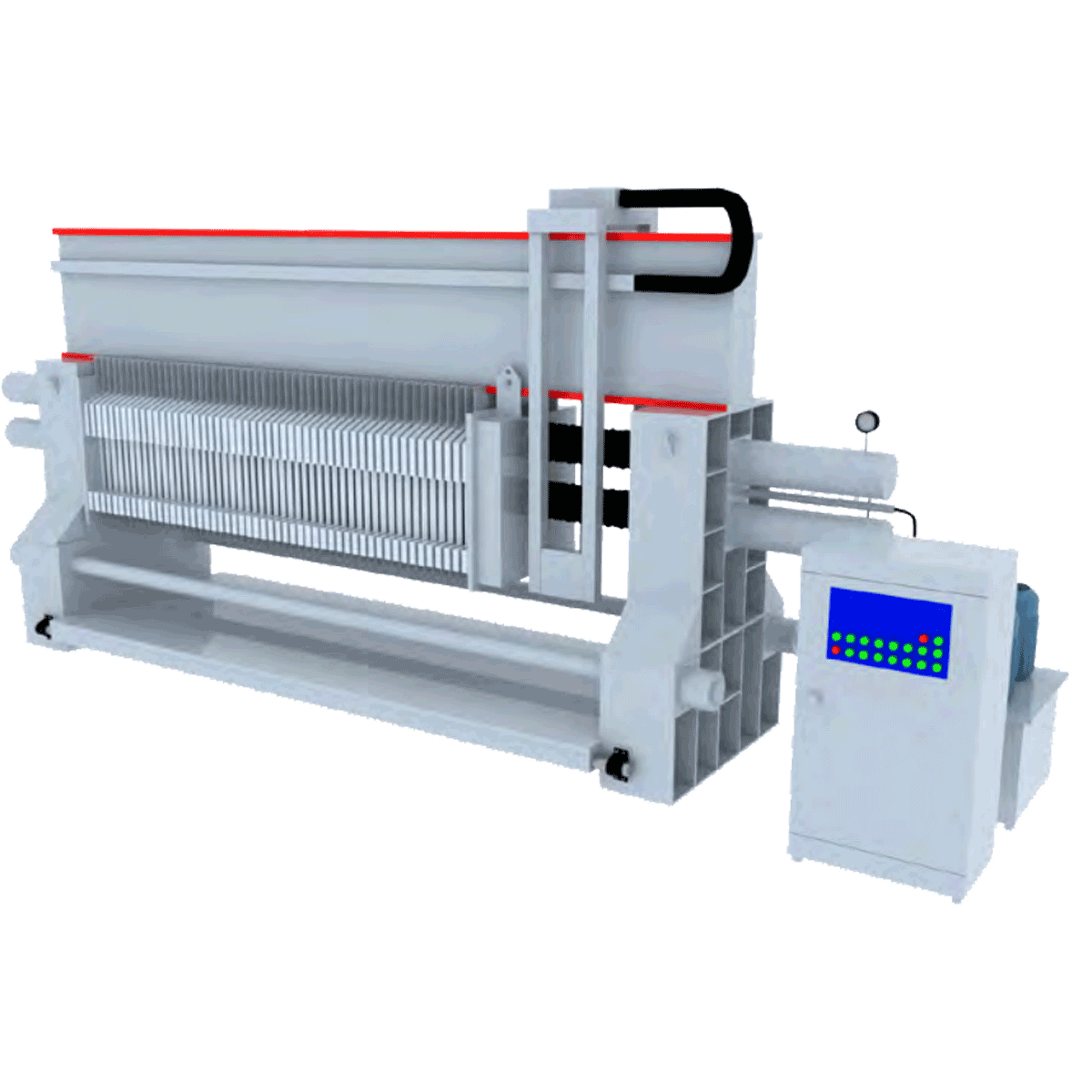

Efficient-conversion-of-concentrators
Manufacturer : MORETEC
Part number :
OEM Compatibility :
Category :Dewatering
Description
Description
Efficient Conversion Concentrator
Principle Overview
The thickener is mainly composed of two main parts: the circular thickener pool and the rake scraper, the thickener pool is mainly composed of two main parts: the circular thickener pool and the rake scraper.
The solid particles suspended in the slurry in the concentrator sink under the effect of gravity, and the upper part becomes clarified water, so that the solid-liquid can be separated.
The solid particles suspended in the slurry in the thickener settle down under gravity, and the upper part becomes clarified water, which separates the solid and liquid. The sludge deposited at the bottom of the concentrator is continuously scraped by the rake scraper.
The sludge deposited at the bottom of the concentrator is continuously scraped and collected by the rake scraper to the center discharge port at the bottom of the concentrator, while the clarified water is discharged from the top edge of the concentrator.
The clarified water is overflowed from the upper edge of the thickener.
Equipment features
Add a degassing tank to eliminate solid particles attached to air bubbles, like a “parachute” for settling.
The equipment is characterized by
The ore feeding pipe is located below the liquid surface to prevent gas from being brought in when feeding ore;
The feeding sleeve is moved downward and equipped with a receiving disk to make the feeding slurry fall evenly and smoothly, effectively preventing the feeding of ore.
◎ The feeding sleeve is moved downward and equipped with a receiving disk, which makes the feeding slurry fall evenly and smoothly, and effectively prevents the tumbling phenomenon caused by the residual pressure of feeding;
The overflow weir is changed to serrated shape to improve the partial suction phenomenon caused by the overflow weir not being horizontal;
The linear rake teeth are changed from oblique to curved, which increases the concentration of the discharge bottom stream, thus increasing the processing capacity.
Scope of use
It can be widely used in metallurgy, mining, coal, chemical industry, building materials, environmental protection and other departments of mining sludge, wastewater, waste residue treatment.
Principle Overview
The thickener is mainly composed of two main parts: the circular thickener pool and the rake scraper, the thickener pool is mainly composed of two main parts: the circular thickener pool and the rake scraper.
The solid particles suspended in the slurry in the concentrator sink under the effect of gravity, and the upper part becomes clarified water, so that the solid-liquid can be separated.
The solid particles suspended in the slurry in the thickener settle down under gravity, and the upper part becomes clarified water, which separates the solid and liquid. The sludge deposited at the bottom of the concentrator is continuously scraped by the rake scraper.
The sludge deposited at the bottom of the concentrator is continuously scraped and collected by the rake scraper to the center discharge port at the bottom of the concentrator, while the clarified water is discharged from the top edge of the concentrator.
The clarified water is overflowed from the upper edge of the thickener.
Equipment features
Add a degassing tank to eliminate solid particles attached to air bubbles, like a “parachute” for settling.
The equipment is characterized by
The ore feeding pipe is located below the liquid surface to prevent gas from being brought in when feeding ore;
The feeding sleeve is moved downward and equipped with a receiving disk to make the feeding slurry fall evenly and smoothly, effectively preventing the feeding of ore.
◎ The feeding sleeve is moved downward and equipped with a receiving disk, which makes the feeding slurry fall evenly and smoothly, and effectively prevents the tumbling phenomenon caused by the residual pressure of feeding;
The overflow weir is changed to serrated shape to improve the partial suction phenomenon caused by the overflow weir not being horizontal;
The linear rake teeth are changed from oblique to curved, which increases the concentration of the discharge bottom stream, thus increasing the processing capacity.
Scope of use
It can be widely used in metallurgy, mining, coal, chemical industry, building materials, environmental protection and other departments of mining sludge, wastewater, waste residue treatment.
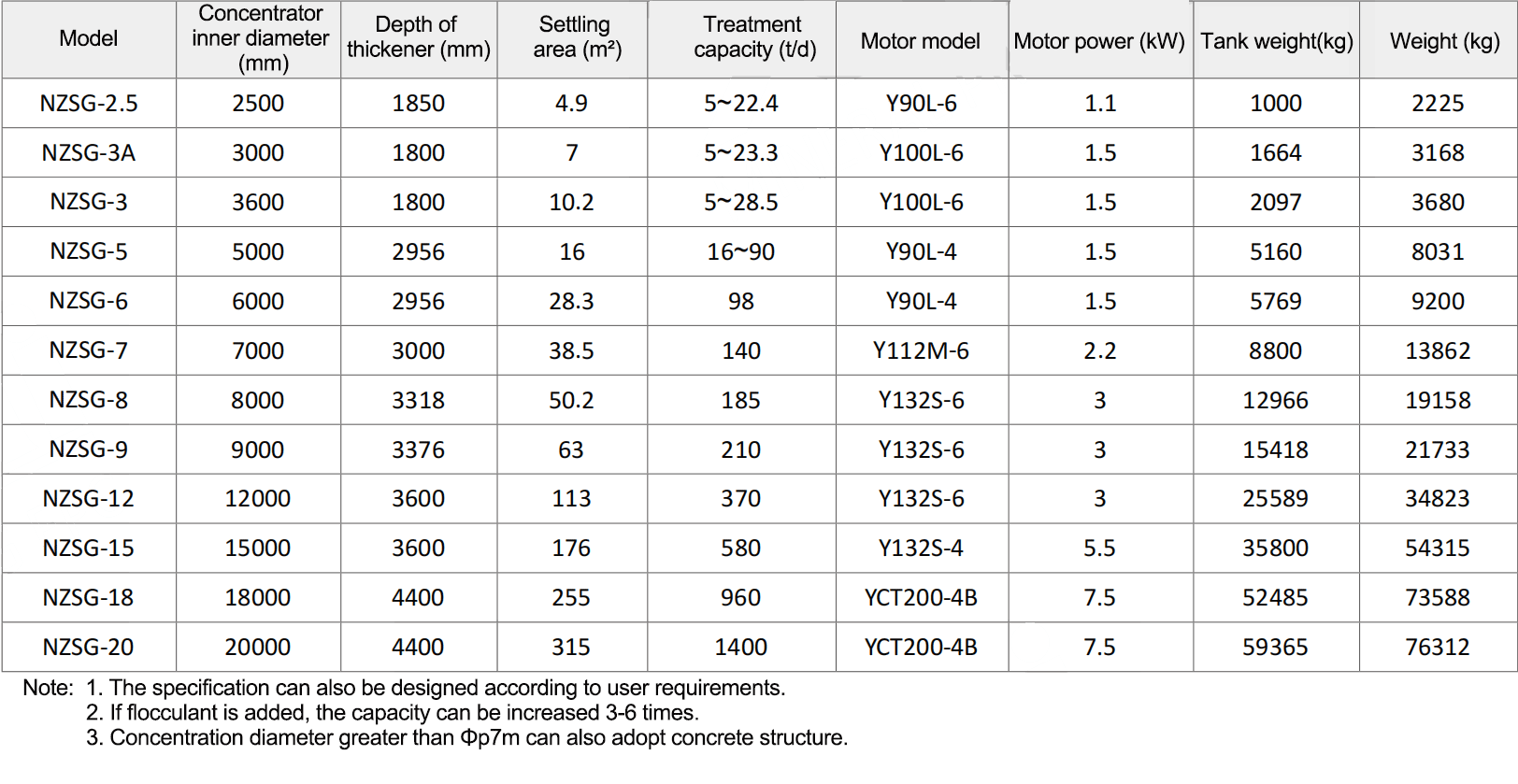
Parts List


